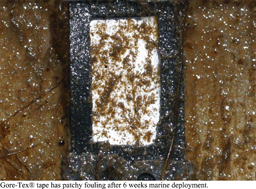Effects of marine biofouling on gas sensor membrane materials
Abstract
The use of underwater gaseous sensors has increased rapidly in the last 10 years. The majority of such sensors employ a thin membrane through which the gas diffuses. These sensors are potentiometric gas-sensing probes and essentially they are ion-selective electrodes. The deployment time of these membranes is curtailed by the formation of biofouling on the membrane leading to erroneous results. The physical properties of a variety of commonly used membranes were investigated using


 Please wait while we load your content...
Please wait while we load your content...